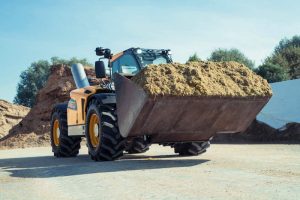When should you transition from CNC machining to plastic injection molding?

Manufacturing strategy decisions require careful evaluation of production volumes, part complexity, and economic considerations. The transition from CNC machining to plastic injection molding occurs when production quantities reach levels that justify tooling investments. This shift typically happens between 1,000 and 10,000 parts annually, depending on component geometry, material requirements, and cost targets across automotive, electronics, medical device, and consumer product applications where volume economics becomes decisive.
Volume threshold analysis
Production quantity serves as the primary driver for manufacturing method selection. CNC machining remains cost-effective for quantities below 1,000 parts annually, where tooling costs cannot be amortized effectively. The break-even point varies based on part complexity, material costs, and machining time requirements. Higher volumes favor injection molding due to rapid cycle times and reduced per-part costs. Once annual quantities exceed 5,000 parts, injection molding offers substantial cost advantages. The crossover point shifts lower for simple geometries and higher for complex parts requiring extensive machining operations.
Tooling cost comparison
Initial tooling investments represent the largest barrier to injection molding adoption. Simple single-cavity molds start around $5,000 to $15,000, while complex multi-cavity tools can exceed $100,000. These upfront costs must be weighed against ongoing machining expenses for equivalent production volumes. CNC machining requires minimal tooling investment but incurs higher per-part costs through material waste and extended cycle times. Each machined part removes substantial material, creating waste that injection molding eliminates. Labor costs accumulate quickly in CNC operations, while injection molding operates with minimal operator intervention.
Amortization calculations reveal the actual economic impact of tooling investments. High-volume applications spread mold costs across thousands of parts, reducing per-part tooling expenses to pennies. Low-volume applications may never recover initial mold investments, making CNC machining more economical.
Part complexity evaluation
Component geometry influences manufacturing method selection beyond simple volume considerations. Thin-walled sections, internal cavities, and complex shapes favor injection molding capabilities. Features like living hinges, snap-fits, and integrated assemblies are easily achieved through molding but are challenging or impossible with CNC machining. Tolerance requirements also affect method selection. Injection molding excels at holding tight tolerances on molded features while maintaining excellent surface finishes. Secondary machining operations can add precision where needed without compromising the economic advantages of molding for primary features.
Material considerations play crucial roles in method selection. Engineering plastics like nylon, polycarbonate, and PEEK are machined and molded, but molding often provides superior material properties through optimized molecular orientation. Glass-filled and carbon-fiber reinforced materials benefit from injection molding processes that align reinforcement fibers for maximum strength.
Production timeline requirements
Manufacturing timeline constraints influence transition decisions beyond pure economics. Injection molding requires 6 to 16 weeks for mold design, fabrication, and validation, while CNC machining can begin immediately from approved drawings. This lead time difference affects product launch schedules and market timing considerations.
Rush programs often start with CNC machining for immediate part availability while injection molding tools are being prepared. This hybrid approach provides parts for testing, validation, and initial production while transitioning to molding for volume requirements. The strategy ensures continuous part supply throughout the development and launch phases.
- Emergency production needs favor CNC machining for immediate availability
- Long-term production planning enables injection molding preparation
- Market testing phases benefit from CNC flexibility before committing to tooling
- Product lifecycle management may require both methods at different stages
Transitioning from CNC machining to injection molding depends on balancing production volumes, tooling investments, and timeline requirements against long-term cost objectives. Volume thresholds typically favor injection molding above 5,000 annual parts, while complex geometries and tight tolerance requirements may justify earlier transitions. Successful manufacturers often use both methods strategically, leveraging CNC machining for prototypes and low volumes while implementing injection molding for high-volume production phases.






